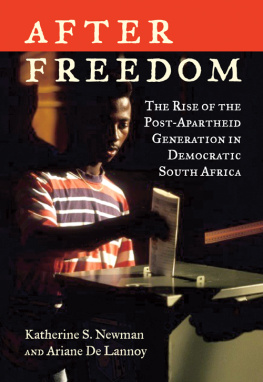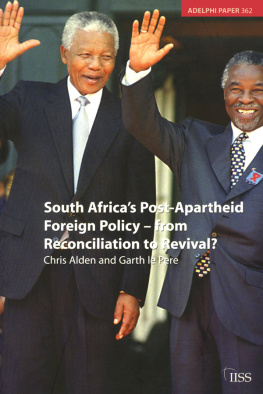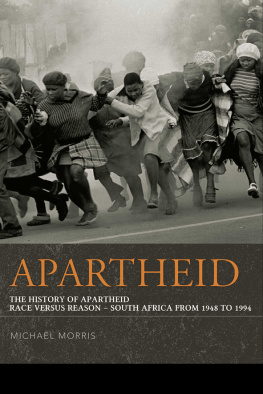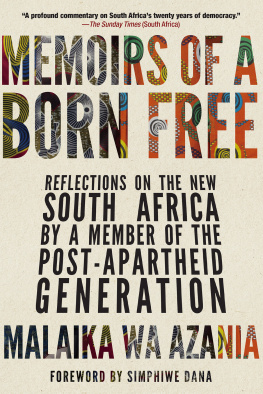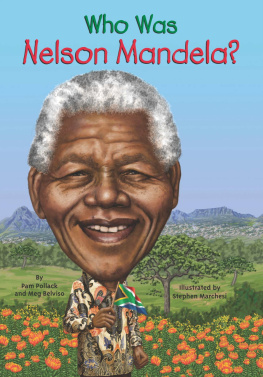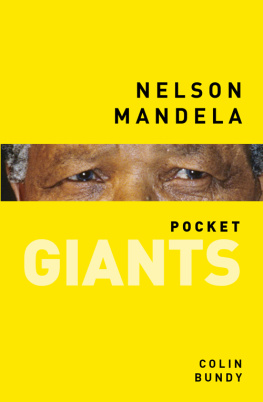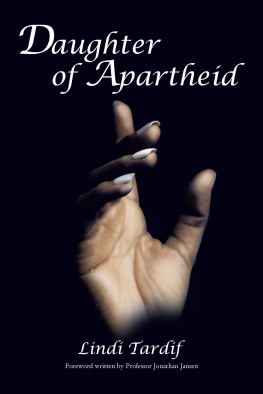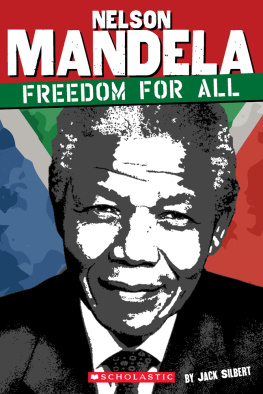

For Siya and Mpendulo
PREFACE
SIXTY-SEVEN YEARS AFTER THE END of the Civil War, Hortense Powdermaker, an adventurous young Yale University anthropologist, set out for the small town of Indianola, Mississippi. Located in the heart of the Delta region, the home of King Cotton, a territory largely unfamiliar to Americans, Indianola was a county seat at the center of the Jim Crow South. Officially and openly segregated, the town was in the grips of a social system that bore a strong resemblance to what would become the apartheid regime of South Africa, already well under construction beginning with the passage of the Colour Bar Act in 1911.
A former labor organizer for the Amalgamated Clothing Workers, Powdermaker was interested in learning about the long aftermath of the Civil War in the South, and about how black and white people had adjustedor notto the stresses of living in close proximity but in a separate, rigidly hierarchical social world. Indianola at the time was blanketed by Whites only signs: on buses, benches, and store entrances. The local movie theater restricted black people to the balcony. White hospitals refused black patients, who had to seek medical care in their own community. Powdermaker herself had to find a way to move back and forth between two worlds that seemed to use every conceivable mechanism to avoid dealing with each other, outside of strictly instrumental relations of the work world or the commercial sphere. Black women cleaned the houses belonging to white families. Black men, women, and children picked cotton in the fields of white landowners. White sheriffs with loaded shotguns loomed over the black world, and the Ku Klux Klan and its midnight riders in white sheets struck terror into the hearts of African American families. Social relations were deliberately minimized and carefully managed according to strict and legally enforceable codes that Powdermaker had to abide by if she was to understand these parallel worlds.
Her book After Freedom: A Cultural Study of the Deep South, whose title inspired our own, was published to acclaim in 1939. It was among the first to reach a broad audience interested in what had changedand what had notin the land of Jim Crow since the end of a bloody civil war fought in part to end slavery. Powdermakers monograph became something of a landmark in anthropology because it was a trenchant analysis of what seemed a foreign country to many American readers. The Deep South had changed relatively little since the mid-nineteenth century. Entrenched racial animus persisted and so too did the police state that enforced the harshest aspects of what came to be known as American apartheid.
Powdermakers observations were poignant, disturbing, and not limited to race. Rigid segregation meant that on either side of the tracks in Indianola, class differences structured both the black and the white communities. African American doctors and preachers served the needs of their people but were elevated above them by their educational and occupational advantages. Their counterparts on the white side of Indianola saw themselves in the same stratified light. Hence, if race was the bold dividing line, class was its subtext. In fact, the stronger the separation of people by race, the more pronounced the internal differences by class. People who were thrown together on account of one characteristic, skin color, found ways to differentiate themselves from those whose neighborhoods, schools, and churches they were forced to share.
Racial division and the ugly consequences that follow remain alive in many parts of the United States today. Setbacksfrom the gutting of the Voting Rights Act to the pernicious consequences of mass incarcerationare reminders of how far we have to go in our own long walk to freedom. Yet no one would argue that nothing has changed for the better. Fifty years after Martin Luther King Jr.s historic march on Washington, there are black mayors, Ivy League university presidents, justices of the Supreme Court, and captains of industry in addition to the first black president of the country. Many of these leaders have seemingly sprung up from nowhere, but many too are the sons and daughters of elites who spend summers on Marthas Vineyard. Class matters in Americas black community just as it does in its white world.
Is the country becoming more polarized and politically divided? Or are racial, gender-based, and other prejudices that seemed enduring in Powdermakers day fading away? Younger, more tolerant generations have embraced forms of diversity that their elders could not abide. Gay marriage is the law in many states; it was unthinkable in Powdermakers time. Is the glass half full or half empty? Where have we come from and where are we going?
Hortense Powdermaker gave us an enduring portrait of the United States in the early days of a long and tortuous transformation of the racial order. We hope to do the same for South Africa, in part by posing and answering similar questions. Twenty years ago, in 1994, South Africa celebrated its first free election. New voters, members of the majority population, which had been denied the franchise for generations, stood in line for as long as nine hours to reach polling booths. It was a democratic frenzy, appropriate to the end of a monumental struggle. Four years before, the proud figure of Nelson Mandela had emerged from Victor Verster Prison after twenty-seven years behind bars. Millions around the globe witnessed his walk to freedom as international media descended on South Africa to announce that apartheid was finished. A clenched fist held high and eyes beaming, Mandela strode along with his then-wife, Winnie, by his side while thousands of people in tears sang the anthem of the African National Congress, Nkosi Sikelel iAfrika (Lord Bless Afrika), in Xhosa, one of South Africas eleven official languages. Mandelas refusal to agree to deals offered him by anxious apartheid leaders, who had said they would cut his sentence in exchange for calling off strikes and protests, had increased admiration for him among his people and in the broader world.
On the day of the first democratic elections, international observers marveled that a country deeply torn by racial division and bathed in brutality was free from the violent explosions that many had expected would follow when apartheid collapsed. The street battles, torture chambers, water cannons, police murders of children marching in the streets of Soweto, economic sanctions, and years of exile had ended.
Since the 1994 elections, many books have been written about the human rights catastrophe that was apartheid, about the leaders who brought the system to its knees, and about the political concessions of F. W. De Klerk, Mandelas negotiating partner, who had represented the all-White National Party. A few books have covered the prospects of leaders of this new democracy, people wholike Mandela and his successors Thabo Mbeki and Jacob Zumahave written its constitution and rebuilt its courts. More than one book has detailed the first use of a Truth and Reconciliation Commission (TRC) that exposed crimes against activists like Steven Biko without exacting any penalty besides public condemnation. Together these works detail parts of an extraordinary history. What they do not provide is an account of how ordinary people, particularly the South Africans who came of age during the post-apartheid transition, see the country that is their birthright: the born-free generation. Now in their late twenties and early thirties, these people were children during the old regime but by the time they came of age, apartheid was far enough in the past to have receded into the background. This generation has witnessed the birth of a new democracy, and it struggles with the meaning of the past but is no longer a prisoner of it. Their parents were on the front lines of that dramatic history, and their children have learned a great deal about their experience through private conversation. When tales of the struggle are told on television or among political leaders who seek public legitimacy by leaning on their sacrifices, many South Africans in their early thirties resonate to those stories. But these accounts do not belong to them. It is not their experience; it is their legacy.

